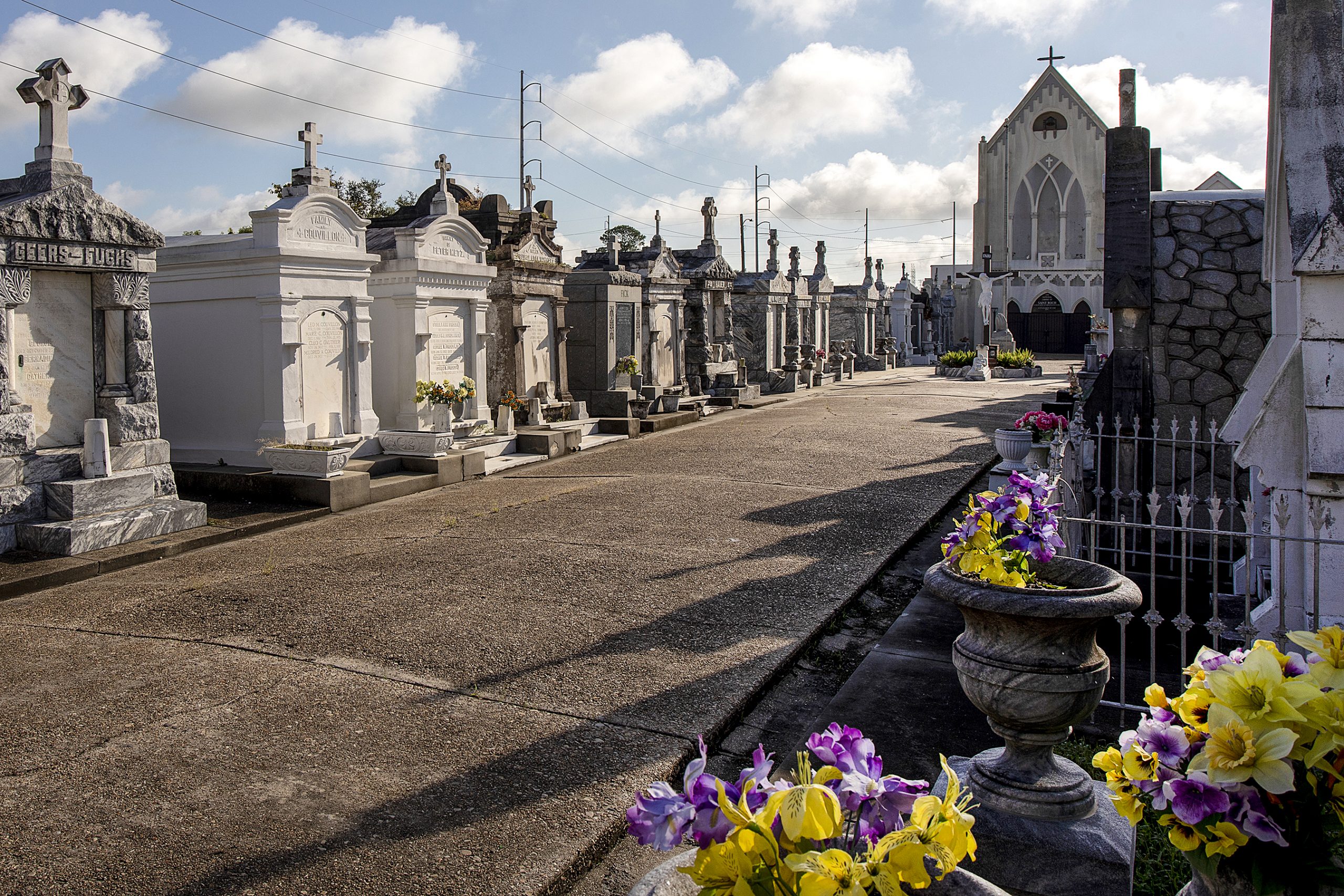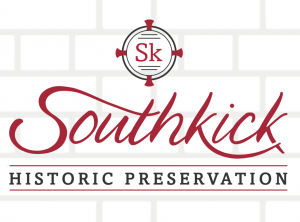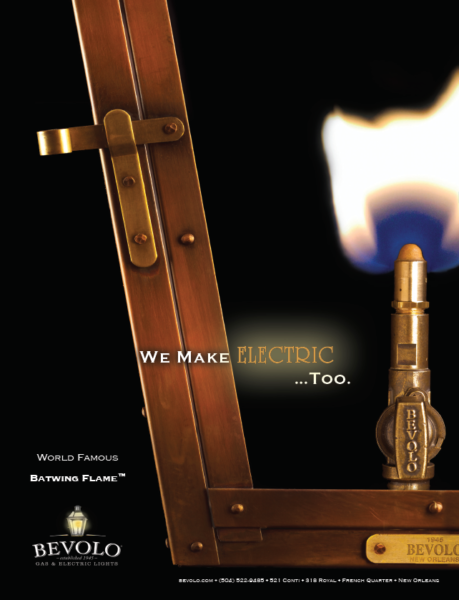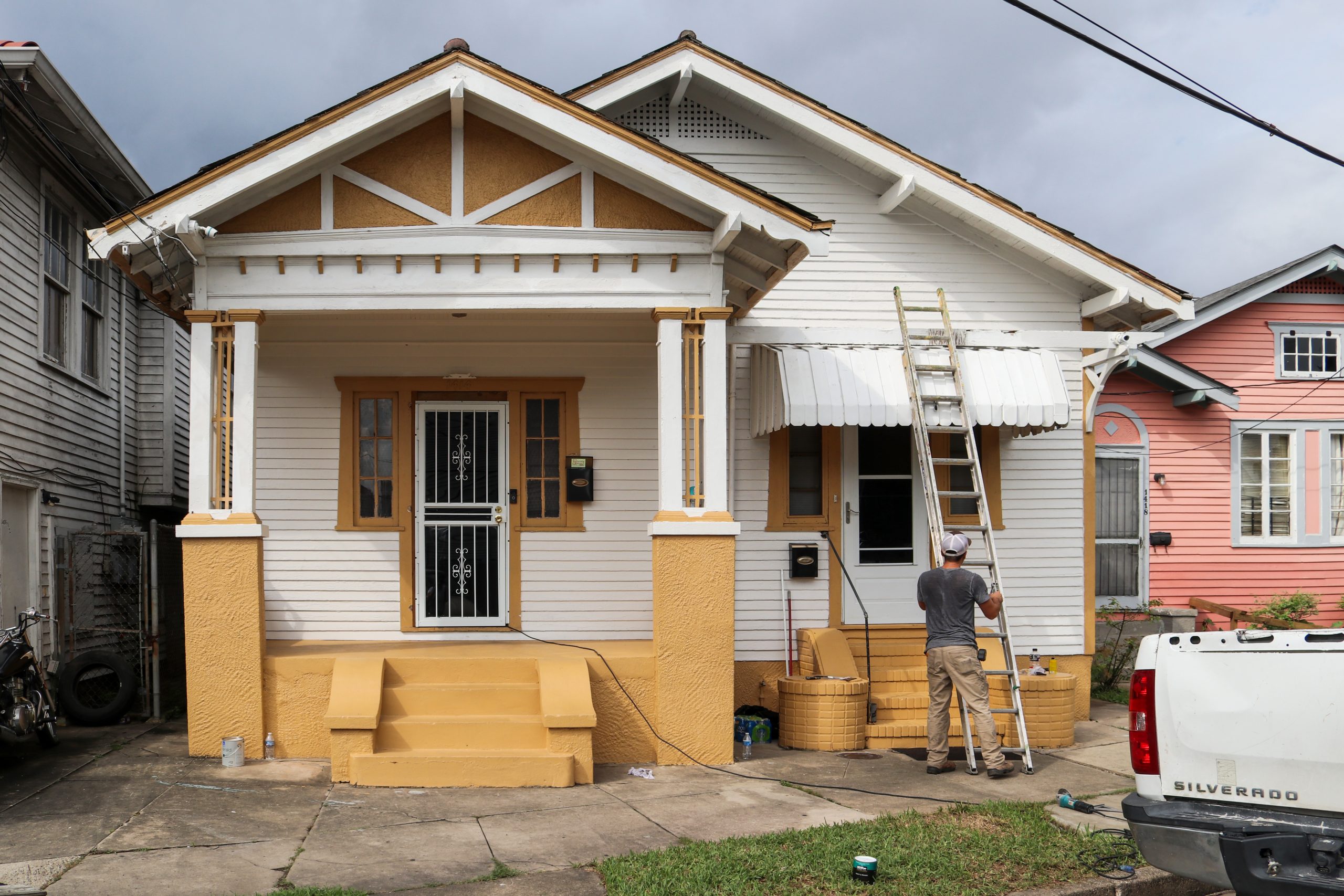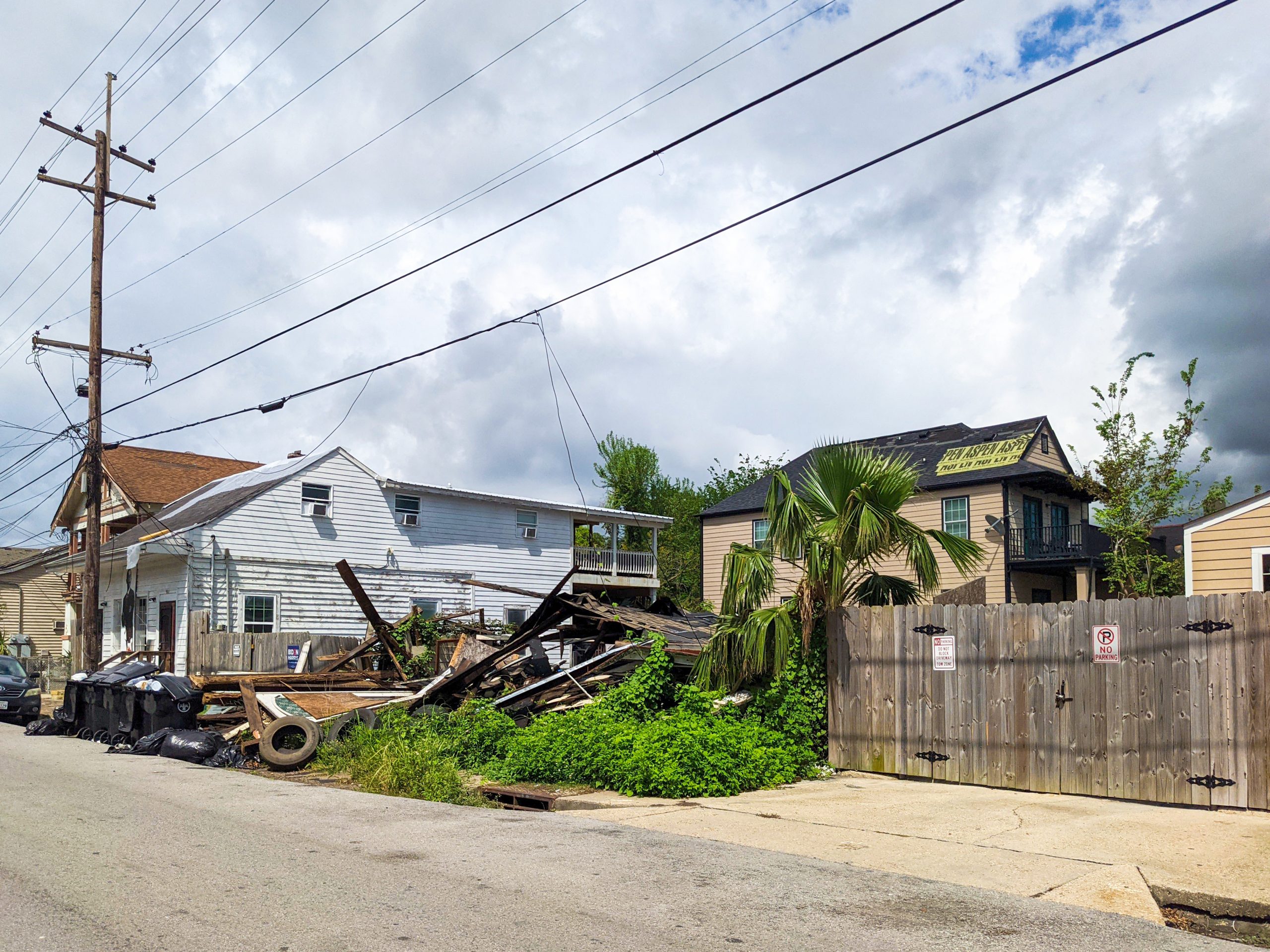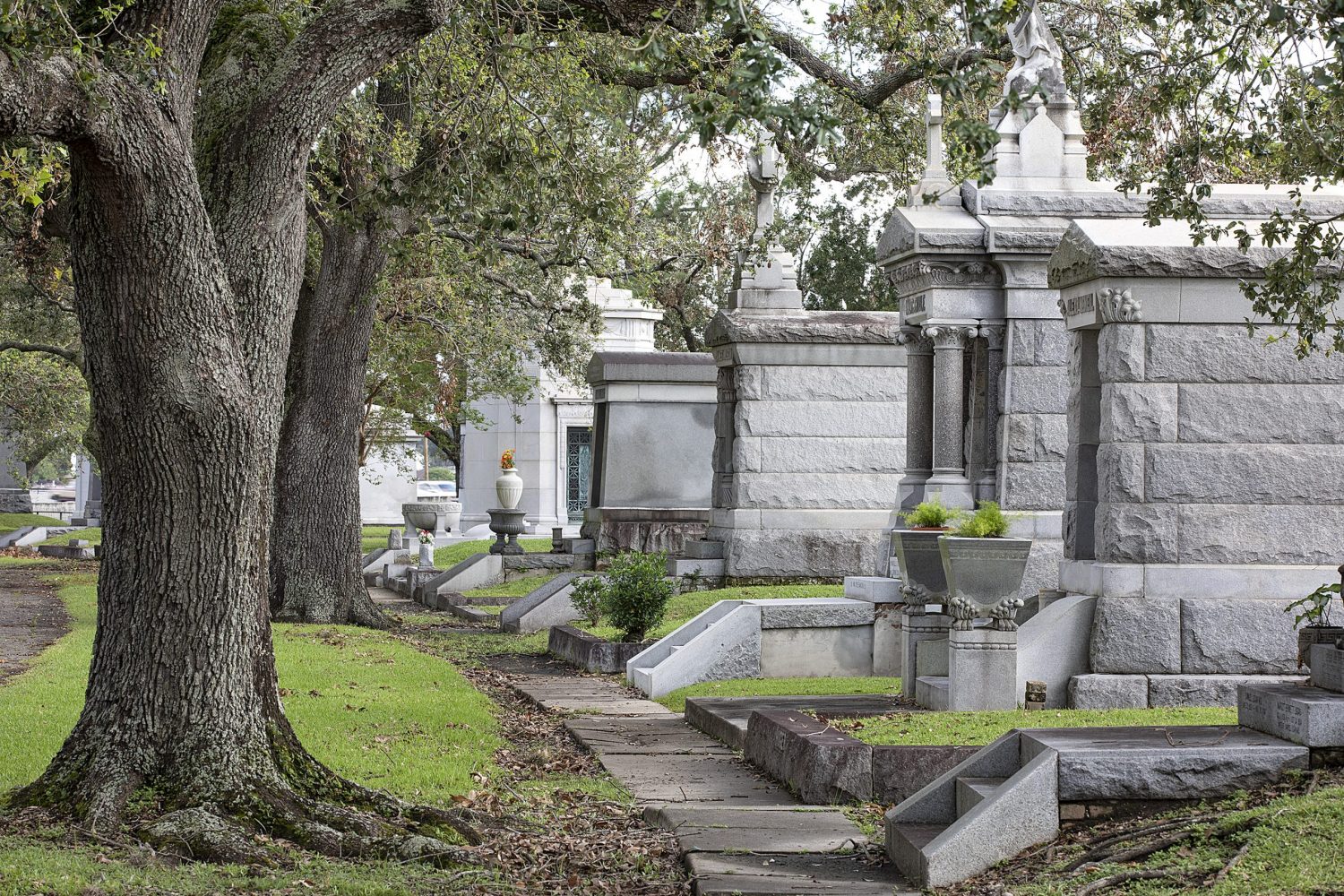This story appeared in the October issue of PRC’s Preservation in Print magazine. Interested in getting more preservation stories like this delivered to your door nine times a year? Become a member of the PRC for a subscription!
No doubt about it, Heather Veneziano thinks big. She is bringing into the digital age a trove of cemetery records that, in New Orleans’ early years, were recorded in longhand, with quill pens, on parchment.
“I’m happy to do this. It’s very important work,” said Veneziano, the staff preservationist and director of public engagement for New Orleans Catholic Cemeteries.
To be specific, she is supervising the creation of digital maps of six of New Orleans’ oldest cemeteries, as well as conducting a damage assessment of every tomb in St. Louis Cemetery No. 2, which contains, among other things, the largest collection of outdoor monuments to African Americans in the United States.
Veneziano is scrutinizing the walls, roofs and tablets in that 198-year-old burial ground because, she said, they are in the worst condition of all the graveyards in the 13-cemetery Catholic network. With the information she and her team glean from the damage assessment, they can prioritize repairs and apply for grants to underwrite the work.
That survey should be complete this month, Veneziano said.
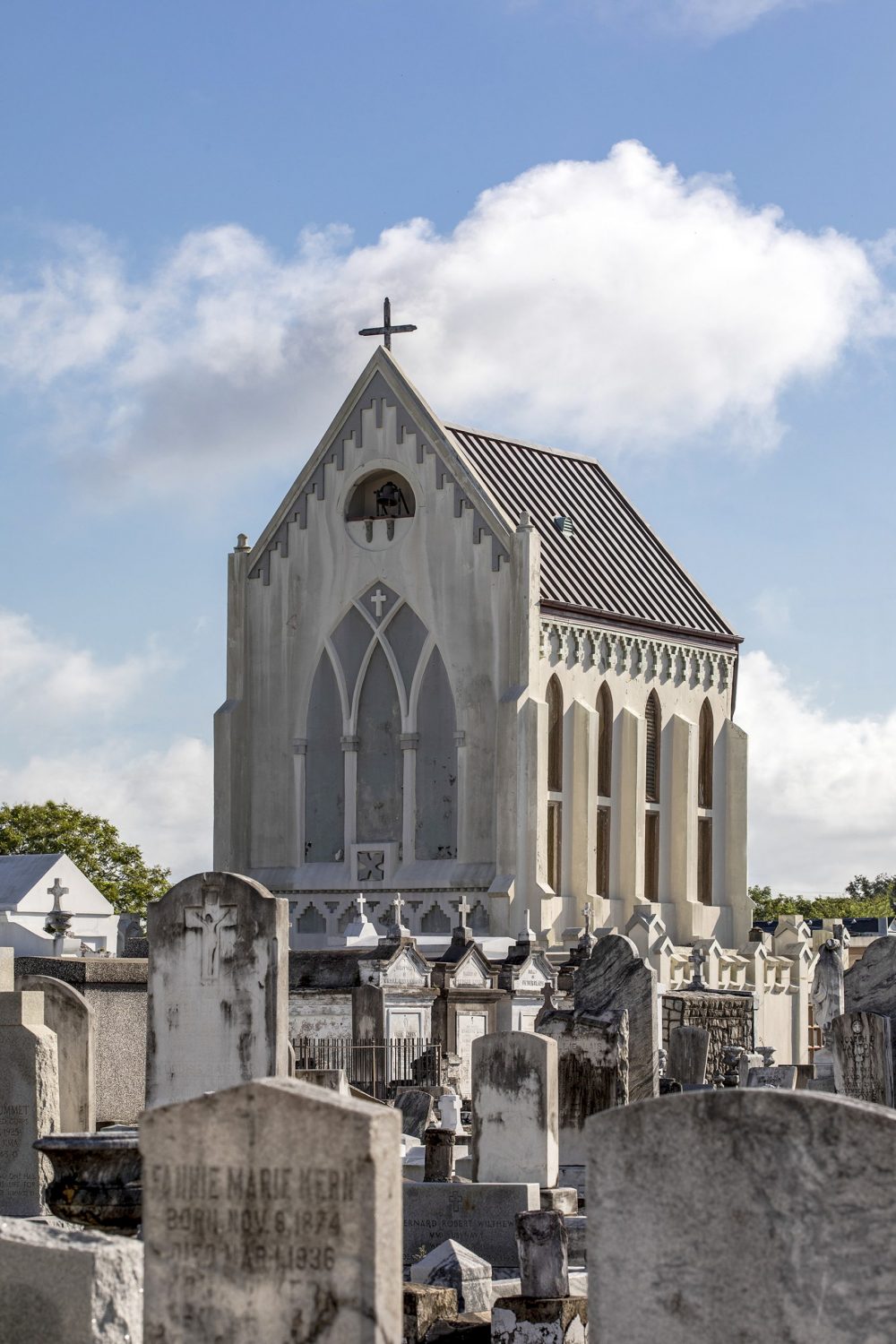
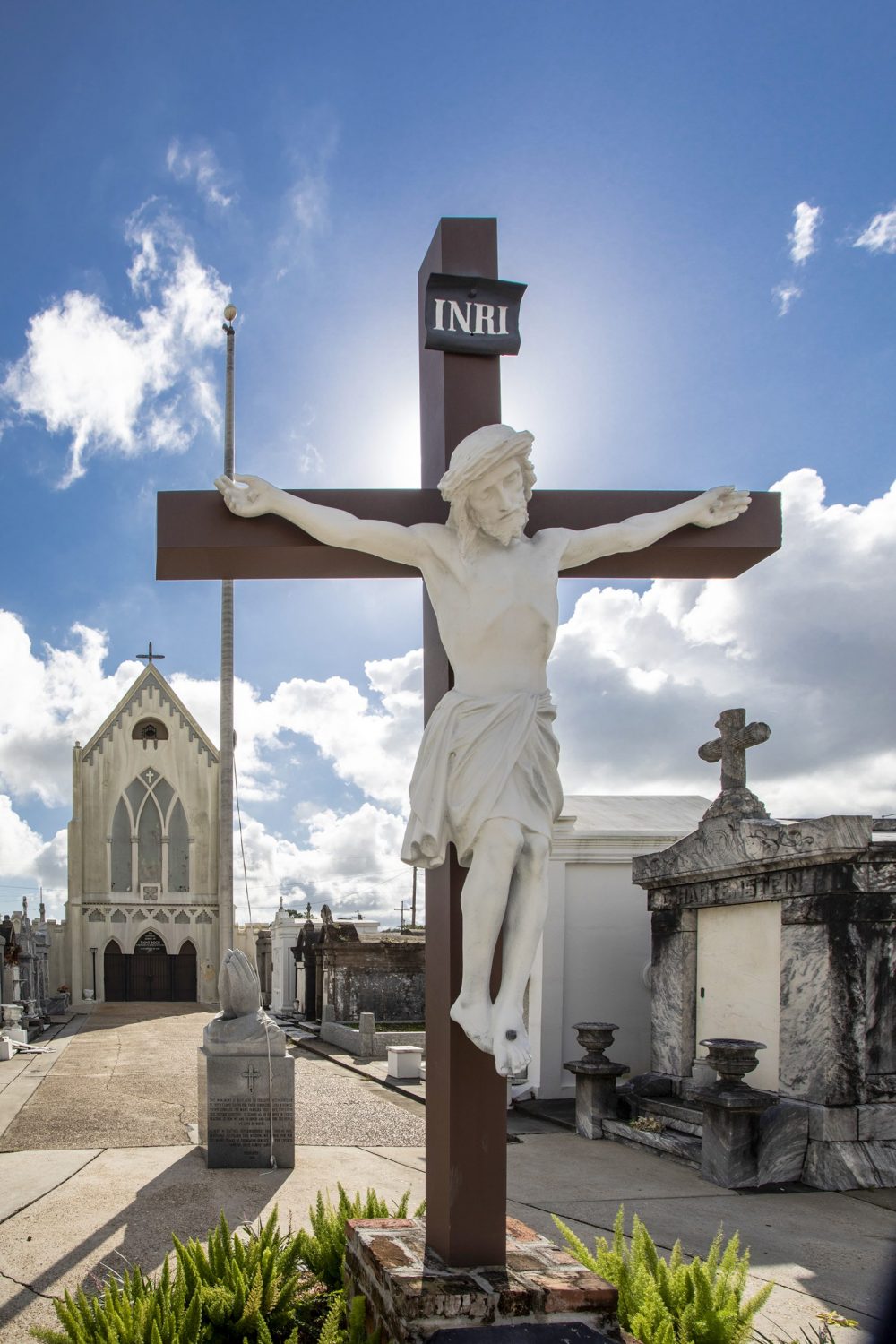
Dedicated in 1876, the Gothic Revival-style chapel in St. Roch Cemetery No. 1 was designated a local historic landmark by the New Orleans Historic District Landmark Commission in 2002. New Orleans Catholic Cemeteries has been restoring the chapel since structural issues were discovered in September 2017. Photos by Charles E. Leche.
The other cemeteries she and a group of Tulane University students are focusing on are St. Louis Cemetery No. 3, St. Patrick cemeteries Nos. 1 and 2, and St. Joseph cemeteries Nos. 1 and 2. Mapping of the St. Patrick and St. Joseph cemeteries is scheduled to start this semester, she said.
By working with students, preservation groups and volunteers, Veneziano said, she eventually hopes to create digital maps of all 13 Catholic cemeteries and incorporate historical data to set up tours. “We’re trying to make the cemeteries more available, not only to locals but also to researchers from far away,” she said. “We want to make it as easy as possible.”
With digital records, cemetery officials will be able to record changes over time to understand what steps need to be put in place to preserve the cemeteries’ future, said Veneziano, who owns Gambrel & Peak, a historic preservation consulting firm.
“The history of Catholic cemeteries isn’t the best when it comes to preservation,” she said, “but the future is phenomenal.”
Even though Catholic cemeteries have been in New Orleans since the 18th century, there was no central organization to manage them until 1966, when Archbishop Philip M. Hannan established it. “Before 1966, churches were individually responsible for cemeteries,” said Sherri Peppo, New Orleans Catholic Cemeteries’ executive director. “They didn’t have the manpower to keep up with the maintenance. There were a few tombs under perpetual care, but for the most part, they were not maintained. That was why Archbishop Hannan formed this office.”
Before & after
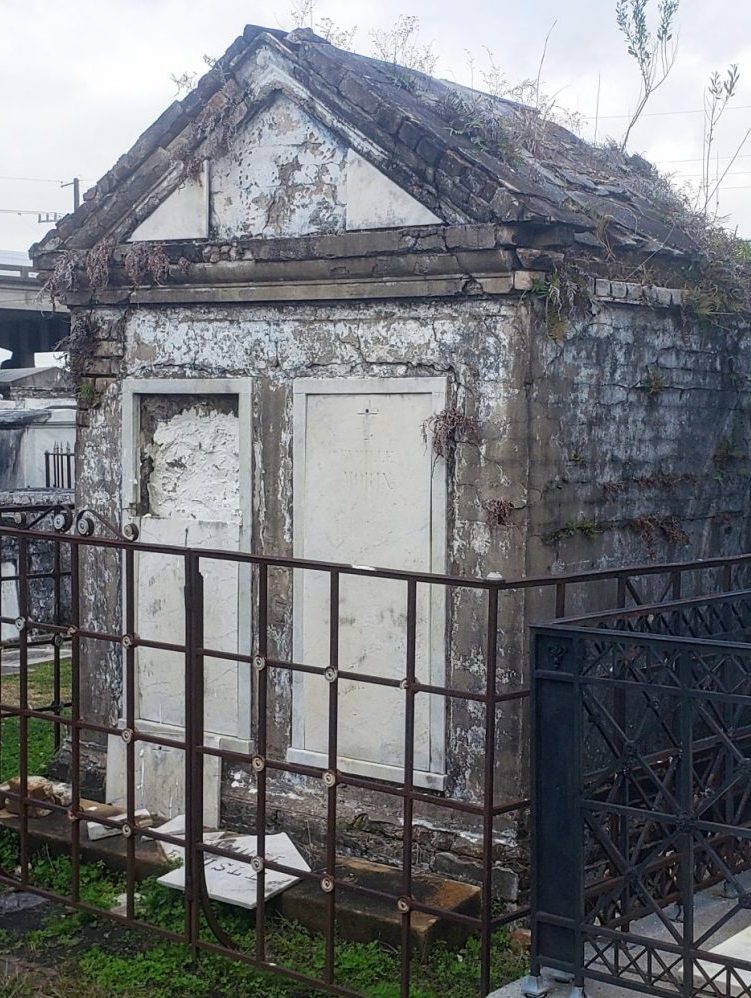
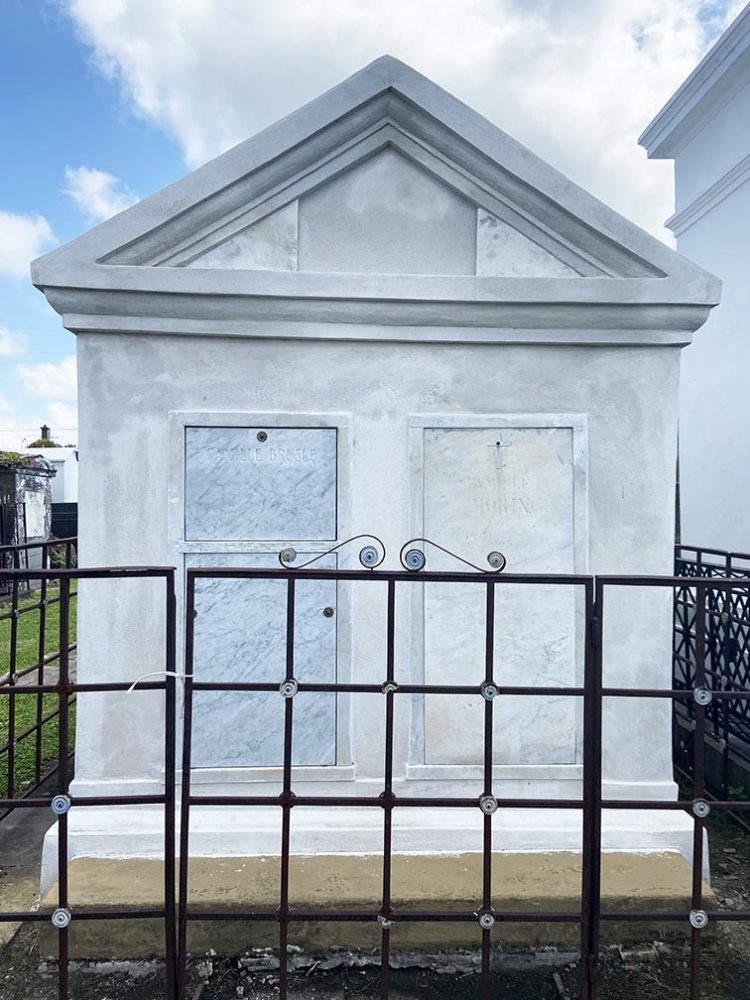
This tomb within St. Louis No. 1 Cemetery was restored through donations. Donate to New Orleans Catholic Cemeteries’ Abandoned and Forgotten tombs restoration effort at nolacatholiccemeteries.org/donate
Families can choose perpetual care — $2,700 for a two-tomb vault, for instance — and the cemetery workers perform the chores, Peppo said. The money goes into a fund from which the interest is drawn for repairs.
Putting up new bricks and plaster can cost about $6,000, Peppo said, while replacing tablets and pavement and iron work can cost more. For restoration jobs, Veneziano said, workers use lime-based plaster and lime wash, not only because they were used when the tombs were built but also because they’re breathable.
“If you use Portland cement or latex paint, any water that enters the tomb wall will eat away at the tomb,” she said. “By using lime-based plaster and lime wash, we create a skin from which the water can escape. … It adds to the cost, but it’s better in the long term.”
The oldest Catholic cemetery still in use in St. Louis Cemetery No. 1, which was established in August 1789. In that burial ground and in other older cemeteries, tombs can fall into disrepair when family members die off, move away or lose interest.
Advertisement
State law allows repossession of tombs, but Peppo said she prefers subtlety to outright threats. “We try to put out the word that there’s a tomb that has been forgotten about and try to get the tomb restored. We try to get the word out to families; we have several (tombs) that we’ve restored through donations.”
In addition to tomb maintenance, another challenge Peppo faces is making space for future burials. One solution, she said, is to build mausoleums; another has been to erect structures in St. Louis Cemetery No. 3 and St. Patrick Cemetery No. 3 that not only contain ashes of cremated Catholics but also take up less space than conventional graves.
Since the 1960s, when the church said cremation was acceptable as long as the ashes aren’t scattered or divided among sites or family members, the popularity of cremation has grown, Peppo said.
“It’s close to 50-50 with burials and cremations,” she said. “We have to utilize our space going forward. Because we knew the cremation rate was going up, that was why we decided to use that space (for cremated remains).”
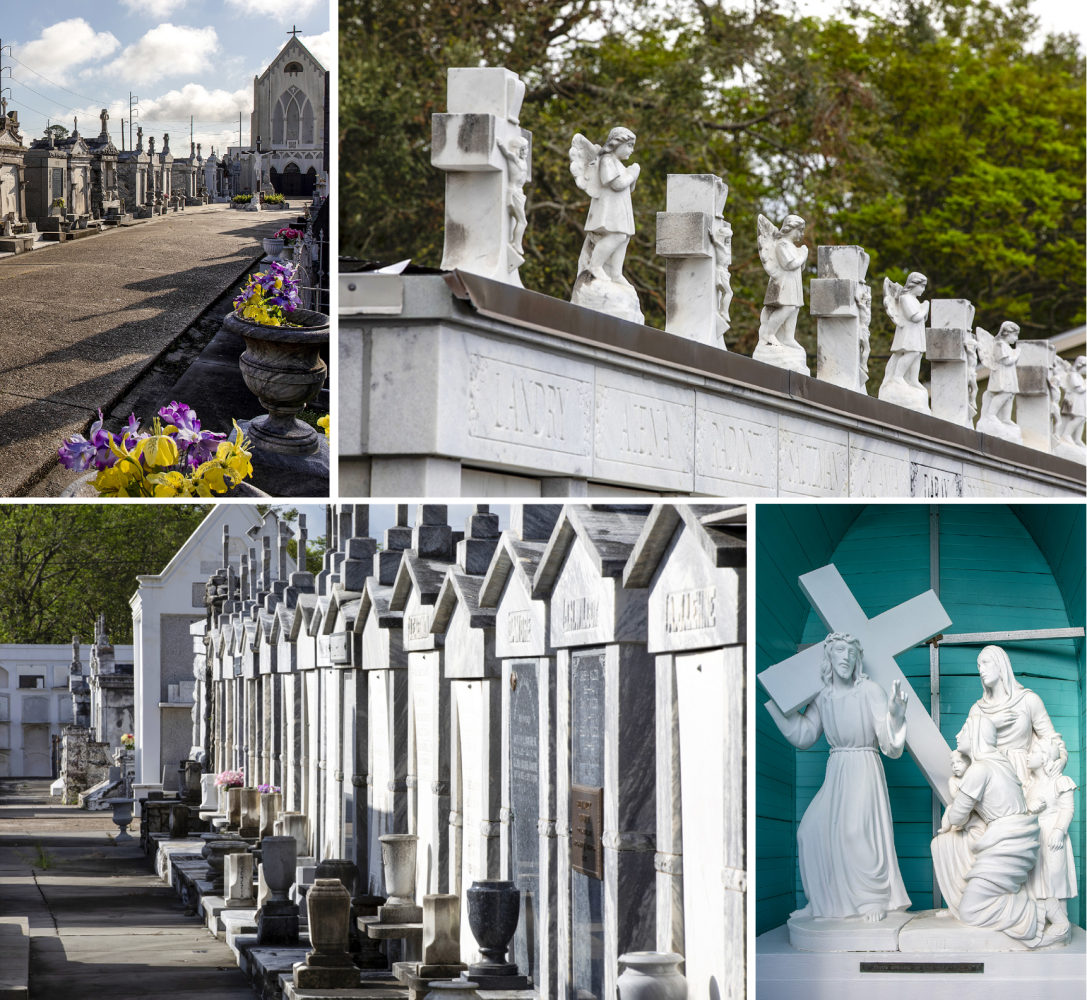
The Rev. Peter Leonard Thevis, pastor of Holy Trinity Church (now home to the Marigny Opera House), established St. Roch Cemeteries Nos. 1 & 2 in 1874. Photos by Charles E. Leche.
Keep reading:
New Orleans City Cemeteries assess damage after Hurricane Ida
Historic Metairie Cemetery is the final resting place for some of Louisiana’s most noteworthy and notorious residents
Advertisements





